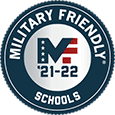On any given construction site, you’ll find a litany of machines and heavy equipment, all serving a unique purpose.
These machines and construction vehicles are used to break down old structures, create new ones, clear debris for new construction, haul the debris away, and more.
Here is an extensive list of the different heavy equipment types and how you’d use them on a construction site.
Table of Contents
Types of Heavy Equipment and Their Usage
Excavators
When the project calls for digging or crushing material, turn to the excavator. This piece of heavy equipment uses a hydraulic-like boom with a metal shovel attachment to break surfaces and scoop earth and debris.
Excavators typically use tracks to navigate the terrain. You’ll find the controls in the driver’s cab, which sits on a rotating platform allowing for additional maneuverability.
Paving Machines
Typically accompanied by a dump truck carrying asphalt, a paving machine lays asphalt on surfaces like roads and bridges. The asphalt is laid flat with little compaction before a roller can compact it. Similarly, some paving machines are used for freeway construction, where the material used is concrete.
Backhoes
Sometimes referred to as a rear actor, back actor, or backhoe loader, a backhoe is a type of excavating equipment that’s usually mounted on a tractor. The arm mechanism closest to the vehicles is called the boom, and the part that carries the bucket is called the dipper.
How To Become a Heavy Equipment Operator?
Bulldozers
One of the most common types of heavy equipment you’ll find on a construction site is a bulldozer. This powerful machine is equipped with large tracks that give it superior mobility even in rough terrain. Its tracks are set wide to help it avoid sinking into loose ground or sand.
Bulldozers consist of two main components—the blade and the ripper. The blade is a heavy metal plate in the front of the vehicles that are used to shove dirt and debris. The ripper is a claw-like device located in the back of the vehicles that are used to break up ground surfaces.
Compactors
Construction compacts have three main types: the plate, the rammer, and the road roller.
The plate compactor has a big vibrating base plate used to create a level grade. The rammer compactor is used for backfilling in narrow trenches for gas or water lines. Road rollers are used for compacting crushed rock that serves as the base layer for concrete, stone foundations, or slabs.
Dump Trucks
To clear the way for new construction, you’ll dump sand, gravel, or debris into dump trucks. Typically, you’ll see dump trucks equipped with hydraulic rams to lift the front, which allies material in the bed to be dumped on the ground.
Tower Cranes
Tower cranes are the tallest and strongest type of crane around. They’re in a fixed position on the construction site and often require on-site assembly (and disassembly). This makes tower cranes ideal for tall building construction.
Boom Lifts
When working on an elevated project, construction crews will call in the boom lift. This type of heavy equipment is used as a platform for workers who need to reach new heights. Boom lifts consist of a crane with a bucket attached at its end for workers.
Drills
If your project calls for creating holes at a mine site, you’d use a rotary blast hole drill. Some drills are autonomous, featuring things like depth tracking, built-in cameras, and more that allow for safer and quicker project completion.
Forklifts
Forklifts can perform short-distance material moving tasks on your construction site or in the warehouse. They vary in size and power, so ensure you’re using the correct one for your project.
Types of Heavy Equipment Programs Out There
There are so many different pieces of heavy equipment out there and programs that’ll teach you how to use them.
From general operations programs to mobile, lattice boom, and tower crane programs, you can earn the training and certification needed to start a new career as a heavy equipment operator.
Where Can You Find Heavy Equipment School?
You don’t have to wait months or years to earn certification as a heavy equipment operator.
At Heavy Equipment Colleges of America (HEC), we have programs you can complete in as little as three weeks. And once you graduate we’ll help you land a job. With locations across the country, you won’t have to travel far either. Find a campus near you today.




